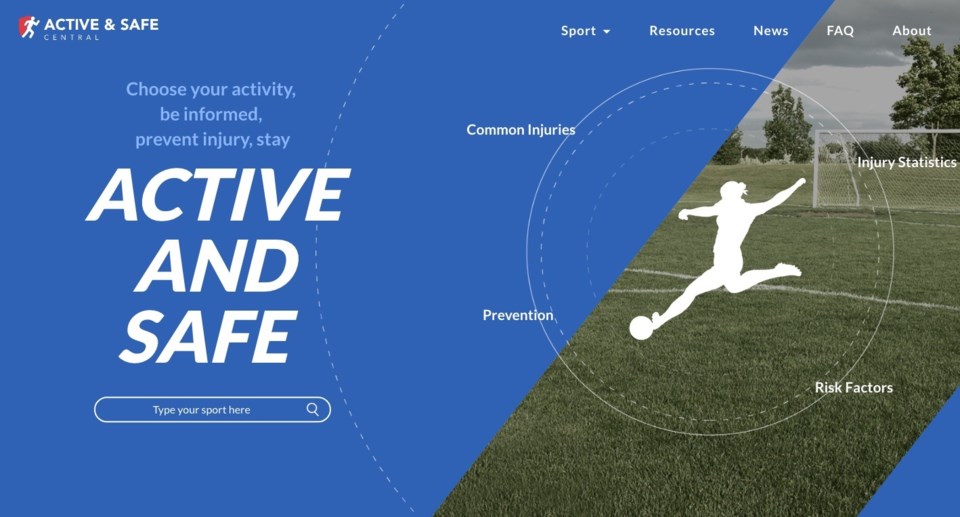It's no secret that Whistler is more active than your average community.
With all the skiing, snowboarding, biking, running, hiking and other sports that fill Whistlerites' days, it's impossible not to acknowledge the constant risk of injury.
Ask anyone who's ended up on the wrong side of that risk and they'll tell you: there's nothing more frustrating than being kept on the sidelines from work and play due to an accidental injury.
But what if some of those injuries were preventable?
In fact, "approximately 90 per cent of injuries are predictable and preventable," explained Dr. Shelina Babul, an associate director and sports injury specialist with the BC Injury Research & Prevention Unit (BCIRPU) at BC Children's Hospital and co-lead for the newly-launched Active & Safe Central project.
That statistic was part of the driving factor behind the development of Active & Safe Central (activesafe.ca), a new online resource aimed at educating young British Columbians about how to avoid injury while participating in their favourite activities.
Active & Safe Central was developed by BCIRPU, in partnership with injury prevention experts, sport injury specialists and sport organizations across Canada. It was launched earlier this month in honour of International Move for Health Day.
"If you take the necessary measures—to give you an example, if you're riding a bike, wear a helmet to mitigate a concussions—it won't prevent a concussion from happening, but it will mitigate, hopefully, the severity of the injury," Babul said. "There's simple things that one can do to avoid injury or serious injuries from occurring-something as little as a pre-(activity) warm up, those kinds of things. Wear the right gear, learn the rules, don't overestimate your physical abilities—it's simple things that one can do to hopefully stay in the game and stay physically active.
"Because we want them to do that, we know the numerous benefits of physical activity," she added. "That was the premise for this resource, was to put an online portal where individuals can go to and hopefully stay in the game and continue doing the things they love to do."
To that end, the online platform was developed as a resource where everyone from players to parents to coaches to medical professionals could go to look at sport-specific common injuries, risk factors, statistics, and prevention tips to help stop injuries before they happen.
The website includes separate, information-filled tabs for over 50 popular sports and recreational activities, including traditionally high-risk team sports like football and rugby and other organized team sports, as well as other, lower-impact activities like hiking, kayaking and even long boarding—and many sports in between.
"We wanted to be very inclusive and not just have the main sports and activities that people play; we wanted to include other activities that other people do play (even thought they're) maybe not in high numbers," Babul explained.
Those interested in visiting the site can first select their preferred activity from a drop-down menu. There, they'll find a wealth of evidence-based, activity-specific information including a list of common injuries, easily identified on a player's silhouette, risk factors and strategies for injury prevention including strength training and warm-up exercise plans, skills training and links to other online resources.
According to Babul, around 900 B.C. children and teens land in the hospital each year due to sports-related injuries—a statistic Active & Safe Central is aiming to help decrease. While those injuries are most often physical in nature, they're often accompanied by mental health challenges, she added.
Patients "are out from playing the game they love. If it's persistent symptoms, they're out from playing with their friends, they may be out of school, and that leads to other issues of anxiety and stress because they can't understand why they can't function normally... By taking preventative measures, hopefully that avoids these mental health issues from occurring," said Babul.




